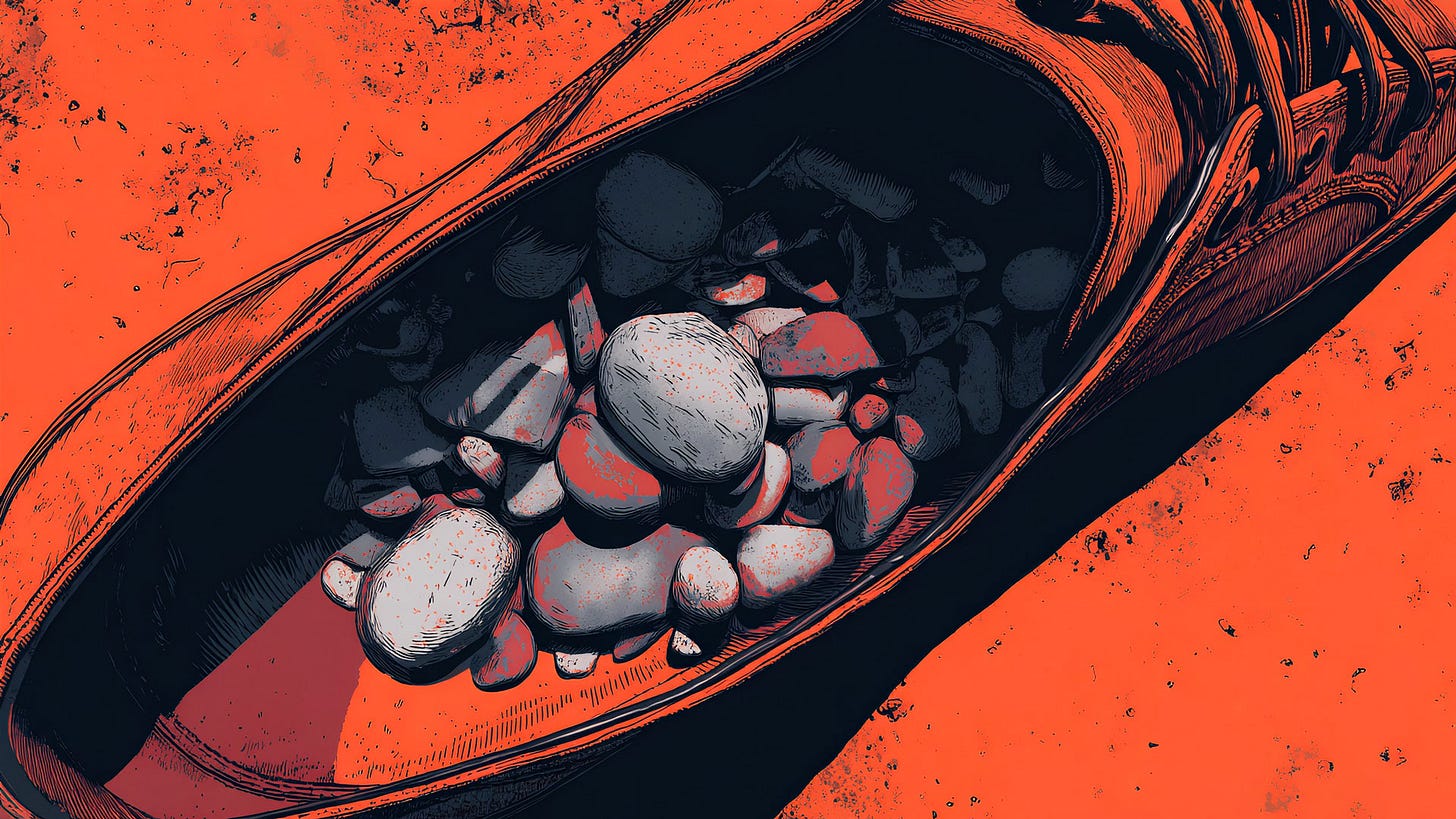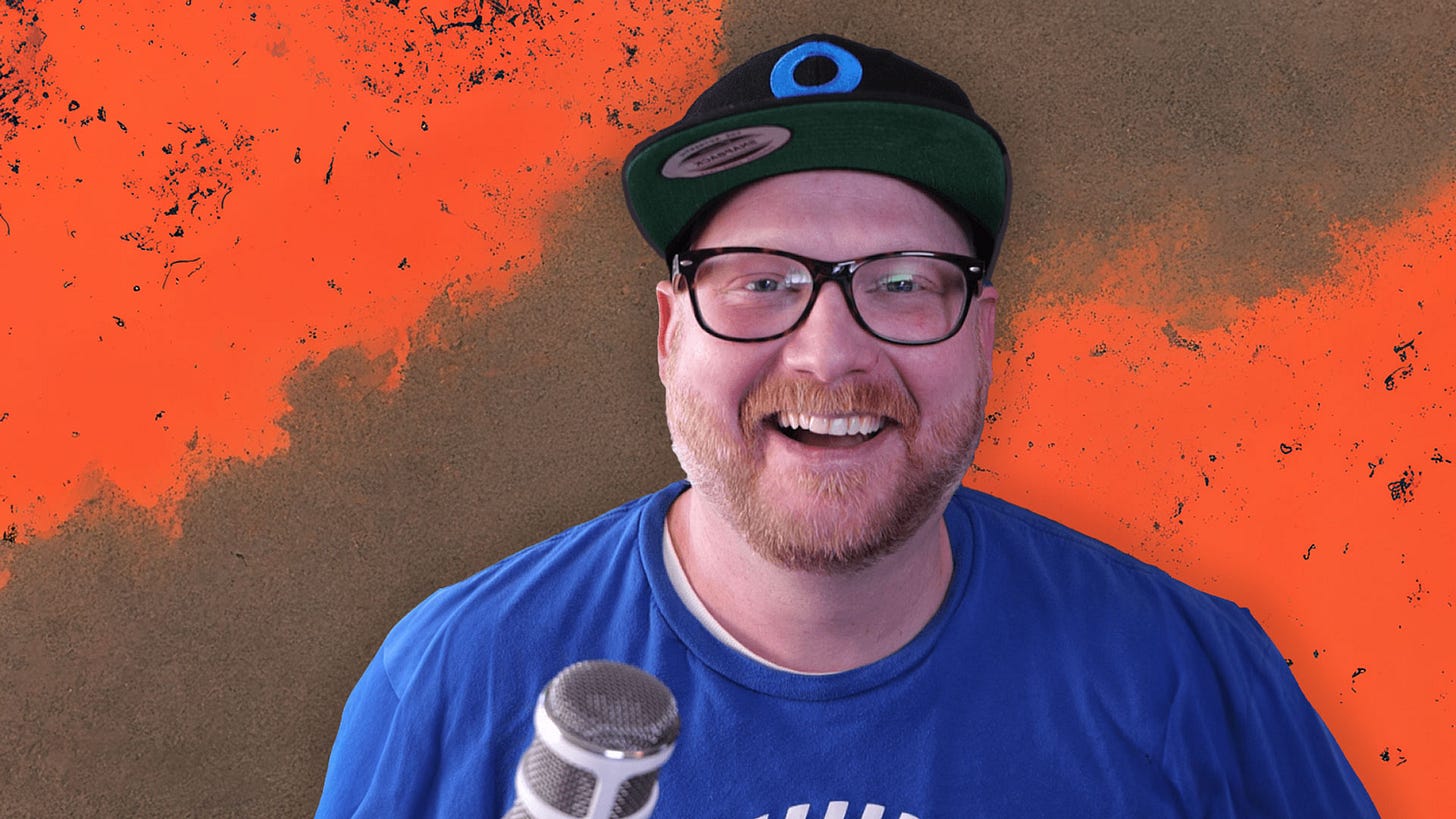Follow the Friction
Big ideas rarely arrive with fanfare—they start as a problem you can’t ignore.
We like to imagine that big ideas enter with fanfare. Spotlights, trumpets, a sudden flash of brilliance. But in reality, most of them arrive as a low-grade irritation. A pebble in your shoe. Something that breaks just often enough to be annoying, but not quite enough to justify a total rethink—until one day, it does. That persistent friction, the kind that forces you to adapt, apologize, or explain, is often a clue: there’s a better way hiding in plain sight. Most of us walk past that clue. A few decide to follow it.
Look closely at the origin story of almost anything game-changing—a product, a platform, even a policy—and you’ll usually find someone who was tired of repeating the same workaround. Innovation doesn’t always require a vision of the future; sometimes it just demands a refusal to keep doing things the hard way. This isn’t disruption with a capital D. It’s something quieter: the decision to solve for dignity, simplicity, or sanity—your own first, and then everyone else’s.
And when you do that—when you fix something that bugs you—you almost always end up helping more people than you expected. Clean solutions tend to travel. A tool that’s easier, faster, or less painful to use doesn’t just work better; it spreads better. People talk about it. They build with it. They rely on it. Solving your own headache has a way of creating momentum—because it turns out you weren’t the only one tired of putting up with the same broken thing.
Every once in a while, someone takes that kind of friction personally. They don’t shrug it off or route around it. They sit with the problem until a better path reveals itself—usually not all at once, but piece by piece. That’s what Eggs! The Podcast guest, Josh Nielsen did. A front-end developer by trade, he didn’t set out to launch a platform or chase a market trend. He just wanted to fix a problem that kept getting in his way. What started as a browser-based recording tool eventually grew into Zencastr—because the fix turned out to be useful to a lot more people than just him.
Josh’s story isn’t just about building a product. It’s about what happens when you keep solving for simplicity, even after the first pain point is gone. It’s about staying close to what frustrates you, and trusting that there’s probably a hundred thousand others out there frustrated by the same thing. Whether you’re launching a company, building a tool, or trying to make one process suck a little less, the lesson is the same: irritation is a signal. The people who pay attention to it tend to build the things the rest of us didn’t know we needed—until suddenly we do.
Follow the Friction with Josh Nielsen
Josh Nielsen didn’t set out to start a company—he just wanted things to work better. Like a lot of engineers, he noticed the same small annoyance over and over again: recording remote interviews was clunky, unreliable, and often sounded terrible. So he started tinkering. Not with a grand plan or funding deck, but with a question: could this be easier?
That question turned into Zencastr, a browser-based tool that helped simplify high-quality audio recording without downloads, setups, or tech support calls. But what’s more interesting than what Josh built is how he built it. He followed the friction. Every time he fixed one piece of the problem, another edge revealed itself. And instead of stopping, he kept going—expanding Zencastr into an all-in-one platform that now supports recording, editing, distribution, and growth for podcasters and creators of all sizes.
What makes Josh’s story so valuable isn’t just the product. It’s the method. He didn’t pivot around trends or chase flashy ideas—he just kept solving what annoyed him. That instinct—stubborn, specific, and quietly relentless—is something every builder can learn from. Here are a few takeaways from our conversation with Josh.
Build what bothers you
Sometimes the best ideas don’t arrive as inspiration—they show up as friction. Josh Nielsen didn’t sit down to launch a platform or disrupt an industry. He was just frustrated. The process of recording interviews remotely felt broken, and instead of tolerating it, he decided to fix it. That mindset—tuning in to what annoys you and solving it with clarity and care—became the foundation for Zencastr, and it still drives how he thinks about growth, product design, and leadership today. Here are a few lessons from Josh worth taking into your own work, no matter what you’re building..
“I didn’t start Zencastr because I had some grand plan. I was just tired of making excuses for why the audio sounded bad.”
Insight: Great businesses don’t always start with vision—they start with frustration. If you find yourself repeatedly apologizing for something, there’s probably a product hiding underneath.
“We were building this tool for musicians, and some random person said, ‘You know who actually needs this? Podcasters.’ I ignored it for two years.”
Insight: The market often knows before you do. If someone outside your target audience is begging for your product, don’t dismiss it. Follow the pull—even if it’s not what you had in mind.
“Timing is wild. If I had started even a few months earlier, the tech wouldn’t have been ready. I just happened to be building as the browsers caught up.”
Insight: Sometimes you’re not early or late—you’re right on time without realizing it. Pay attention to infrastructure shifts. They can quietly unlock your next move.
“I thought that was the end of the business. Chrome dropped an update and suddenly 30% of our recordings were out of sync. We had no control, no ETA, nothing. But people kept using it anyway.”
Insight: When you’re solving something that truly matters, people will stick with you—even through bugs, breakage, and chaos. That’s product-market fit in its rawest form.
“I was solo for too long. Doing support, code, design. I thought I wanted that indie lifestyle, but it just got out of hand. The real stress came from not growing fast enough.”
Insight: Staying small feels safe until it starts hurting your users. Growth isn’t always about ambition—it’s about survival.
“I didn’t want to be a CEO. I just wanted to build things. But you realize at some point: you can’t outsource all the hard parts. You have to learn to lead, even if you’d rather be coding.”
Insight: Founders don’t get to hide from the uncomfortable parts. Leadership isn’t about being ready—it’s about deciding to show up anyway.
Nothing changes if you don’t fix it
There’s a moment every builder hits: the creeping realization that something is harder than it needs to be—and no one’s coming to fix it. You either live with the frustration or you follow it. Josh Nielsen followed it. Not because he had a roadmap or a brand strategy, but because he was sick of apologizing for the same problem over and over again. That choice—to treat irritation as insight—changed the trajectory of his work and, eventually, thousands of others.
We often overcomplicate what it means to innovate. We chase disruption, category creation, or visionary positioning. But the real edge might be simpler: noticing what’s broken, fixing it cleanly, and doing that again and again until it snowballs. Zencastr wasn’t born from a love of audio—it was born from a refusal to accept bad tools. And from that decision came clarity, momentum, and scale.
If you’re stuck, overwhelmed, or just waiting for the next big idea to arrive, zoom in. What’s bugging you right now? What are you tired of explaining, patching, or working around? That’s not a distraction—it’s direction. As Josh shows us, the next right move doesn’t have to be big. It just has to make something a little less annoying. Start there.
Thanks for reading,
—Ryan
Ready for more?
Catch Josh Neilsen’s interview in its entirety on Eggs! The Podcast.
Don’t miss a show! Subscribe on Spotify, Apple Podcasts, or really anywhere great podcasts are found.
Path Picks
Cool stuff to help you forge your path to greatness.
Note: The Path Weekly is reader-supported. As such, I may be using affiliate links below. If you want to support the newsletter at no additional cost to you, please consider using the links below. If you’d rather not, most items below are widely available anywhere you want to shop. Thanks! –R
Reading list
If you're looking to go deeper on the themes from this week's newsletter, here are a few books that pair well with the conversation and offer a broader perspective:
Blitzscaling by Reid Hoffman and Chris Yeh
Directly referenced by Josh in the interview, this book explores how companies grow at lightning speed—and what structural decisions separate those who survive scale from those who burn out. A must-read for founders navigating growth, timing, and risk.The Mom Test by Rob Fitzpatrick
A practical guide to talking to customers without lying to yourself. If you’re trying to figure out whether a problem is real—or just real to you—this is essential. Especially relevant to Josh’s early decision to follow the pain point his users kept surfacing.Make Something Wonderful by Steve Jobs (via the Steve Jobs Archive)
A beautifully edited collection of Jobs’s letters, interviews, and internal talks. Beneath the iconography is a maker obsessed with simplicity, timing, and craft—values echoed throughout Josh’s story.
More to explore
Connect with David Young:
Official Website:
LinkedIn: LinkedIn Profile
Work with me
Ryan Roghaar - Fractional CMO/Creative Director/Art Director: https://rogha.ar/portfolio
R2 - Creative Services for Agencies and SMBs: https://www.r2mg.com
***NEW*** R2 Health - Healthcare branding & strategy that connects, inspires trust, and drives results. Powered by R2. https://www.r2mghealth.com
Eggs! The Podcast: https://www.eggscast.com
Would you like a personal introduction to any of the incredible leaders featured in The Path Weekly to explore business or other collaborative opportunities?
Contact me here to learn more about my B2B matchmaking service.
Get featured
Do you want to be featured in a future edition of The Path Weekly?
Contact me to learn more.




